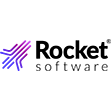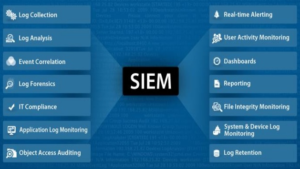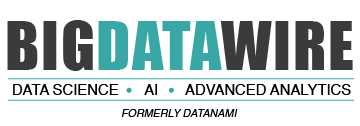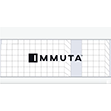
Rethinking Risk: The Role of Selective Retrieval in Data Lake Strategies

(TippaPatt/Shutterstock)
For years, enterprises have viewed data lakes like you would your attic, jam-packed with “just in case” stuff. These vast storage silos have simply been passive data archives. Yet a quiet shift is underway, particularly in industries like engineering and finance, where the volume and volatility of log data have outpaced the capacity of traditional SIEM and analytics tools.
The new frontier in risk mitigation lies in something deceptively simple: selective retrieval. That is, the ability to triage, park, and later selectively ingest high-volume data from a centralized repository for forensic or compliance-driven investigation.
Think of this as “data lake pragmatism”—neither real-time for everything, nor archival and inert. Instead, selective retrieval offers a structured way to defer high-cost analytics while maintaining forensic readiness.
Selective Retrieval in the Real World
In an enterprise environment, every user action leaves behind a trail—file opens, logins, network pings. One organization in the engineering sector, operating across a distributed footprint in Central Europe, needed to keep tabs on file access patterns for intellectual property protection. That sounds straightforward until you consider how complicated file system logging can be. Every opened file, even a benign PDF, is viewed by multiple users, generating hundreds of entries across endpoints.
For this engineering firm, the challenge wasn’t lack of visibility; it was the astronomical volume. With tens of millions of log lines streaming in daily, analyzing all that data in real time through a SIEM platform would have incurred prohibitive costs. The solution wasn’t to eliminate the data; it was to postpone its analysis.
All logs were sent to a central data lake, but only a small fraction (around 5%) was analyzed immediately. The remaining 95% was parked; still accessible but dormant until a forensic query or audit required it. So later when someone in the boardroom may ask “Who accessed the blueprint last week before the security anomaly happened?” analysts need to only dip into the archives, grab the relevant data, and have an audit trail at their fingertips, instead of spending huge amount of time diving into raw logs.
Without selective retrieval, this question would have required always-on analytics for all data, draining both budget and infrastructure.
Taming the Noise Without Losing the Signal
Another use case comes from the world of firewall logging, which can be like trying to find meaning in a toddler’s crayon masterpiece. Here, the noise isn’t just large, it’s relentless. Firewalls track every network connection, allowed or denied. Depending on business needs, one team may care deeply about denied requests (potential attacks) while another cares about the successful ones (signs of internal misuse or lateral movement).
Historically, teams had to choose to keep the “yeses” or the “noes,” but not both. Why? Because every retained log entry drives up storage and SIEM processing costs. Now, with selective ingestion pipelines and modern data lake architectures, teams can stash both sets. The bulk data is stored inexpensively and only analyzed when needed.
This is especially relevant during post-incident reviews or compliance audits. Analysts can “rewind the tape” by selectively pulling in just the sliver of data relevant to the investigation, rather than sifting through haystacks daily.
The value here is twofold: risk coverage without always-on cost, and flexibility without architectural lock-in.
Why Now?
Several technological shifts are converging to make this possible and necessary:
- Affordable Storage: The cost per terabyte of storage has dropped dramatically, making it feasible to retain logs for longer periods.
- Composable Pipelines: Event pipelines now support conditional routing – only routing high-signal logs to hot analytics, while offloading others.
- Preview Before Ingest: Recent platform updates allow teams to preview stored data before ingesting it, further reducing false positives and resource waste.
- Flexible Ingestion Triggers: Analysts can now pull data based on metadata, time windows, or event tags, rather than fixed schedules or thresholds.
Together, these capabilities reframe how security, compliance, and operations teams treat log data. Instead of a constant stream to be processed exhaustively, it is now a reservoir to be tapped selectively.
The Human Factor
Of course, technology alone isn’t the full picture. One reason many enterprises haven’t implemented selective retrieval themselves is the skill mismatch between data engineering and security operations.
As someone who’s seen hundreds of customer implementations, I’ve found that the issue isn’t whether something is technically possible, it’s whether it’s operationally feasible. Could your security team build a pipeline to offload logs to cold storage and recall them on demand? Sure. But are they equipped to build and maintain it while also investigating threats and managing incidents? Probably not.
Selective retrieval works because it bridges the gap between data engineering complexity and security usability. It gives teams options without asking them to reinvent the wheel. It also avoids the need to bring in external tools during a breach investigation, which can introduce latency, complexity, or worse, gaps in the chain of custody.
The Business Case
What’s compelling about this approach is that it doesn’t require businesses to abandon existing tools or re-architect their infrastructure. Instead, it lets them sidestep a false binary: real-time or archive, expensive or ignored.
In practical terms, a business can retain 100% of logs for 12+ months at low cost, ingest only the top 5-10% of high-signal logs in real time, run ad hoc investigations as needed without backfilling massive data sets and also support compliance audits by pulling precise log windows tied to regulated workflows.
This model is especially relevant for mid-size IT teams who want to cover their audit requirements, but don’t have a 24/7 security operations center. It’s also useful in regulated sectors such as healthcare, financial services, and manufacturing where data retention isn’t optional, but real-time analysis for everything isn’t practical.
Looking Ahead (Spoiler: More Logs are Coming)
Data volumes are continuing to rise. As organizations face high costs and fatigue, those that thrive will be the ones that treat storage and retrieval as distinct functions. The ability to preserve signal without incurring ongoing noise costs will become a critical enabler for everything from insider threat detection to regulatory compliance.
Selective retrieval isn’t just about saving money. It’s about regaining control over data sprawl, aligning IT resources with actual risk, and giving teams the tools they need to ask, and answer, better questions.
The data lake, once a passive sink, is now an active part of the risk mitigation toolkit. And that’s a shift worth watching.
About the author: Adam (Abe) Abernethy is Vice President of Customer Enablement at Graylog. Abe began his cybersecurity career in the 90s; with unsupervised computer access and a love for hijinx. He developed technical skills during a decade working IS Special Projects in the Canadian Army, then as the head of Security for one of Canada’s largest Cities and now as the self-titled VP of ‘Interesting Things’ and ‘Customer Enablement’ at Graylog. He loves teaching future technology leaders part time and explaining advanced concepts.
Related Items:
Masking Technical Complexity in the Security Data Lake
Super Scalable SIEMs Set to Tackle Big Security Challenges
Observability and AIOps Tools Rise with Big MELT Data




























